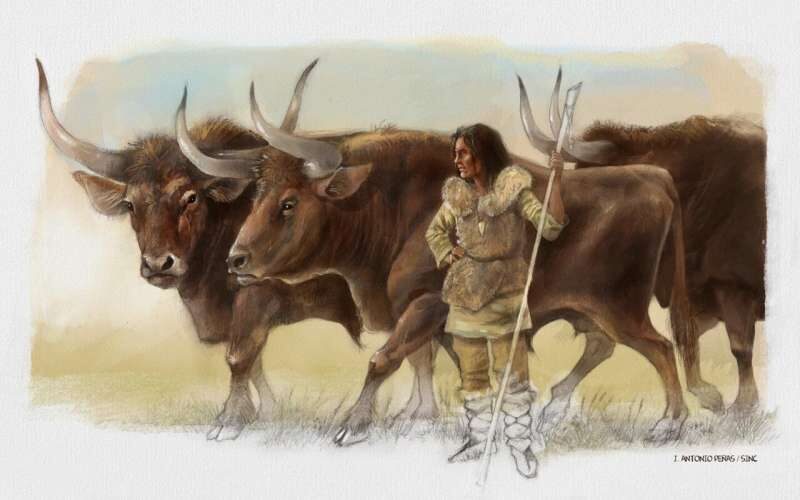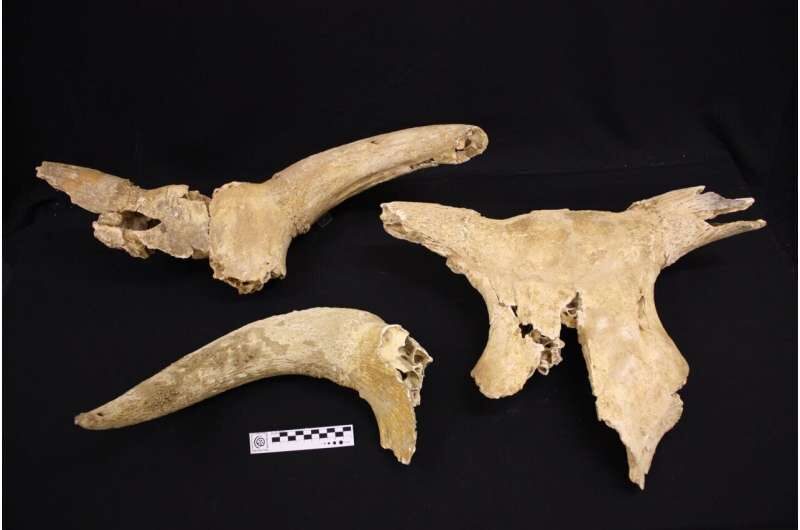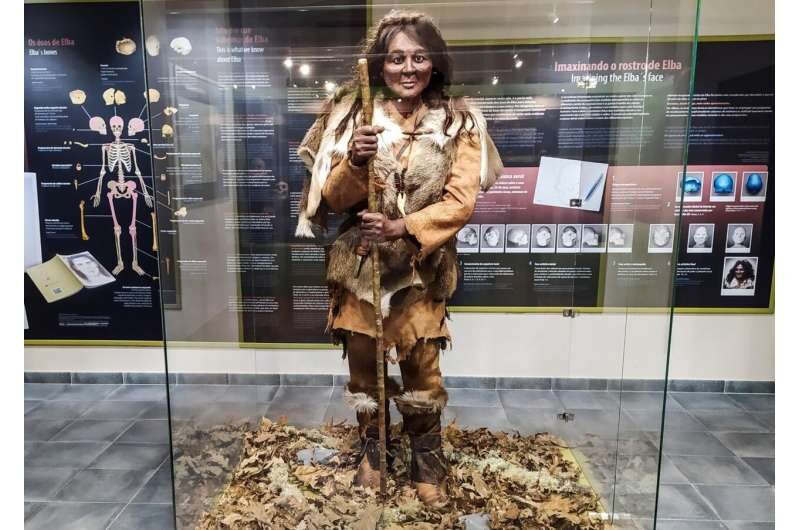
Humans have maintained a very close relationship with aurochs (Bos primigenius) since their beginnings, first by hunting them and then by breeding and selecting them. This extinct species of mammal is little known in the Peninsula because its skeletal remains are difficult to distinguish from bison. In fact, there have been references to the presence of "large bovids" in many sites because they cannot be differentiated. At a European level, there is also a lack of genetic data.
An international team of scientists has managed to extract mitochondrial DNA from ruminants from different periods in Galicia. They have analyzed the remains of B. primigenius from the Chan do Lindeiro cave (Lugo). These remains were found in a chasm together with the human fossils of the shepherdess of O Courel, "Elba", dated at around 9,000 years old. The aurochs analyzed are not the oldest ones discovered, but they are the oldest ones whose mitochondrial DNA has been sequenced so far. Interestingly, although they were found together, they are genetically very different.
"Their discovery in the chasm together with a human is a great enigma. Given all the evidence, such as their similar chronology and the fact that the bones are intermingled at the base of a slump caused by the sinking of the ground -at a depth of 15 to 20 meters-, we think that the woman and the aurochs were found together. This interpretation is controversial because domestication is not regarded as having existed at the time," as Aurora Grandal, a researcher at the University of A Coruña and the co-author of the study published in the PLoS ONE journal, has explained to SINC.
The analysis of their mitochondrial DNA has not allowed these three aurochs to be related to the modern cows of the Peninsula. To investigate this possible relationship, the next step for the research team is to analyze the nuclear DNA.
Until now, different varieties of aurochs have been described, based on their morphology only. The three analyzed in this study belong to haplogroup P, which is characteristic of the species. However, they differ from each other in a large number of base pairs [pieces that make up the genetic sequences], which is striking considering they are coeval. "This may indicate that they were from different origins, in a scenario in which the Elba woman played an active role; or a trait that simply reflected a very high genetic variability in the aurochs," says the researcher.
The origin of cattle domestication in the NorthDomestic cattle were introduced into Spain by the first settlers and agricultural societies. Due to the absence of Neolithic sites in Galicia, very little is known about the process in this region.
To extract information about the introduction of this livestock in Galicia, researchers sampled 18 cattle fossils of different ages from different Galician mountain caves, of which eleven were subjected to mitochondrial genome sequencing and phylogenetic analysis.
The study of the three aurochs revealed their kinship with aurochs from other parts of Europe. "By studying their mitochondrial DNA, which is transmitted almost intact from mother to offspring, we can determine in which geographical areas the different lineages predominated and what their movements were due to changes in climatic conditions or even to humans following the onset of livestock farming," the paleontologist and veterinarian Amalia Vidal, co-author of the study at the same university, tells SINC.
Thanks to the DNA, it is possible to know whether the native aurochs contributed to local livestock farming or, on the contrary, were imported animals, "with all the information that this provides about the movement of bovine and human populations," Vidal continues.
Her data show a close relationship between the first domesticated cattle in Galicia and modern cow breeds and provide an overview of cattle phylogeny. The results of the study indicate that settlers migrated to this region of Spain from Europe and introduced European cow breeds now common in Galicia.
Aurochs related to the British
"Specifically, these aurochs are more closely related to the aurochs of the British Isles than to the Central European specimens. British aurochs are more recent than those from Galicia. This may be related to the role of the Peninsula as a glacial refuge and the origin of the later recolonisation of the islands," Grandal points out.
These three coeval animals are small and have relatively short horns compared to those of northern Europe, and their morphology is different.
The researchers are now endeavoring to analyze the nuclear DNA of the three aurochs, which will allow them to learn about the possible contributions of these individuals to later domestic livestock. "For example, fragments of nuclear DNA from the British aurochs can be recognized in some breeds of northern European cows. This shows that there was a genetic contribution from aurochs to the already domestic cattle. We are going to look for possible contributions from our aurochs to Iberian cows, whether present-day or fossil," Grandal stresses.
In recent years, there has been a growing interest in the scientific community in learning about the origins of domestic animals, and there are a large number of projects to reconstruct their ancestors. One of the reasons for this is that these species are considered to be more rustic and with a better capacity to adapt to harsh environmental conditions.
"Early projects sought to generate phenotypes similar to the species they were trying to recreate (as was done with Heck cattle), but more modern projects also use DNA as a source of information," Vidal concludes.
Ancestors of bulls and cows
The social organization of aurochs herds is assumed to have been similar to that of their domesticated bovine descendants: a single male who is relieved by another male as he weakens and his group of females.
The new males, when they reach adulthood, do not remain in the group, whereas the females do. In this way, it is normal for females of the same group to be related, which means that their mitochondrial lineages are similar.
The domestic cow comes from the domestication of the aurochs, albeit not in the Iberian Peninsula but in Asia, specifically in the Middle East, and from a small number of uses. This is the origin of the domestic cow, which then spread along with humans to occupy the whole of Europe.
In Italy, some researchers claim that the already domesticated cows had genetic contributions from local aurochs. The same holds for the British Isles. The contribution of local aurochs to cows is best observed in the nuclear DNA and was detected in some cases in northern European breeds.
In the north of the peninsula, the oldest domestic cows are about 7 to 6 thousand years old.
More information: Marie Gurke et al, Insight into the introduction of domestic cattle and the process of Neolithization to the Spanish region Galicia by genetic evidence, PLOS ONE (2021). DOI: 10.1371/journal.pone.0249537 Journal information: PLoS ONE





unless we discovered a way to take milk without the cows knowing, which is unlikely it suggests that farming is much older than presently thought.
The dairy tolerance was reported from genetic research and it applies to Northern Europeans. Although I would think it might be for other genotypes too.?